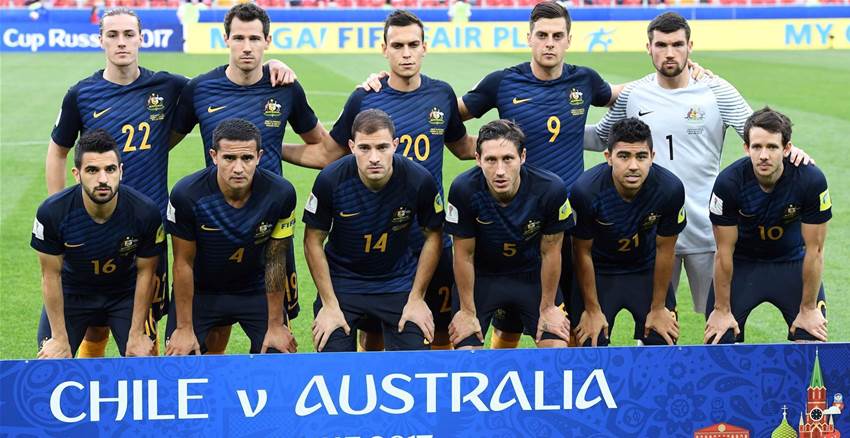A dominant performance from Australia against world number four Chile was not quite enough to progress to the semi-finals of the 2017 Confederations Cup, with a number of missed chances culminating in a 1-1 draw.
Intelligent and disruptive pressing
Chile are renowned throughout world football for their expansive, possession-hungry style of play.
For the first time in recent memory, La Roja were forced to go against this philosophy and employ more direct tactics. This was not due to the underperforming of their players, or a lack of technical ability, but simply down to the intelligent press designed by Ange Postecoglou and executed by his team.
The first, and most obvious element of the press was that the centre-backs were allowed to have the ball, giving the Socceroos the ability to maintain a compact defensive shape and minimise space between the lines.
On the contrary, pressing the centre-backs opens up more space, and allows the opposition to play around you if the first line is unable to win the ball back – sitting off ensured that this did not happen.
In what could be described as somewhat of a medium-to-high block, Tomi Juric was given the task to screen Silva, Chile’s holding midfielder and a key figure during build-up play. This had an immediate and profound effect, as Chile found themselves unable to recycle possession in the same manner that they generally do.
In most cases, Silva is covered by an opposition midfielder, allowing a spare man to drop from a higher position and act as the midfield fulcrum in his place. However, as Juric was marking Silva, Cahill and Troisi were able to screen and cover any such movement, forcing Chile into long balls or turnovers in dangerous areas of the pitch.
Australia were essentially pressing with a front three for the first time since the change in system.

If the Chilean centre-backs were to approach the trigger line with the ball, it is at that moment when they would be pressed – if not, an overload could be created in midfield, allowing them to play out.
Irvine and Luongo, who sat ball-side in behind the first line of pressure, were able to fulfil two important duties defensively; the first, to intercept passes that penetrated the first line and contest for second balls, and the second to track the runs of Vidal and Aranguiz, who would often retreat in order to offer a supportive option.

Above, Australia’s pressing is shown to result in a long ball from Chile’s Diaz. It is important to note that every player has a specific role to play:
· Aziz Behich (left wing-back) is responsible for the marking of Chile’s right-back Isla, who was largely static throughout the match.
· James Troisi (left attacking midfielder) is responsible for pressing the Diaz, the right centre-back, and ensuring that forward passing line are cut off.
· Tomi Juric (centre forward) is responsible for cutting off the access to Francisco Silva.
· Tim Cahill (right attacking midfielder) is a mirror-image of Troisi, responsible for the opposite centre-back.
· Robbie Kruse (right wing-back) is responsible for tracking the movement of Eugenio Mena, covering his vertical movement to ensure he could not receive the ball or initiate an overload.
· Jackson Irvine and Massimo Luongo were primarily responsible for tracking the runs of their respective midfielders, but were also tasked with intercepting penetrative passes should Vidal or Aranguiz be in the cover shadow of one of the players in the first line of pressure.
This highly detailed defensive scheme yielded stunning results, directly leading to Australia’s opening goal and the abandonment of Chile’s notable playing style.
Related Articles

Champion A-League coach set to join Premier League giants

Under the gun: Spurs fans want Ange to be a loser in night of spite













